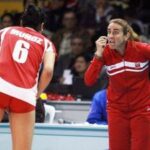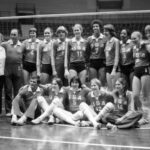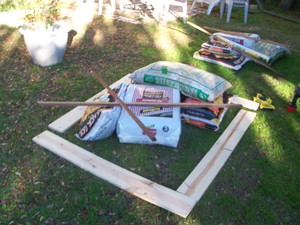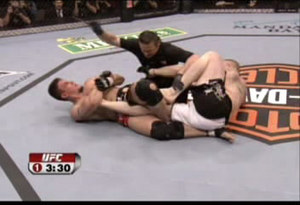Nowadays, there is not any other nation in the world that’s as mad about soccer as Peru, a Spanish-speaking republic in South America. But it is not a great competitor on world stage. Since the early 1980s the men’s soccer team from Peru has had numerous ups and downs. In recent years, it pales in comparison to Honduras, Cote d’Ivoire (a war-torn country in sub-Saharan Africa) and Serbia (formerly Yugoslavia). In the times of Edison Arantes do Nascimento and Paolo Rossi, from 1970 until 1982, the Peruvian squad became one of the top teams on the American mainland, ahead of Mexico and the United States, as well as Paraguay and Chile. Unfortunately Peru continues to celebrate these wins.
After of 26 years of gradually decline, for example, the Andean country ‘”with more than double the budget of Paraguay'” came to a head in 2009 when it placed last in the World Cup Elimination Round for South America, behind Bolivia and Venezuela, a baseball-loving nation.
During that event, however, all matches were waited with euphoria and interest. On that occasion, in Montevideo, they lost 6-0 to Uruguay, but every Peruvian player earned $ 2,000 (according to Jose Malqui, a congressman). However, unsuccessful continued in the same year: at National Stadium in Lima, before an audience of some 17,050, Ecuador routed the local nation 2-1. By 2005, four years ago, the men’s soccer team of Peru also had an awful year: the squad attempt to qualify for the 2006 World Cup, but it had finished ninth in the South American competition, among 10 countries. Despite these results, soccer continues to be Peru’s number-one sport.
Prior to 2005, the under-17 national football team never had participated in the universal events. Yet, despite former Head of State Alejandro Toledo’s support for the FIFA Under-17 World Cup at Lima, the host country’s team finished last in late 2005. Over the course of the tournament, they lost 2-1 to Costa Rica. Previously, the Peruvian rule had implemented a USD 20 million investment project to host the America Cup (or Copa America), an event where the local squad could not qualify for the semi-finals. With the exception of football, sport and education were not endorsed by the country’s then-president Toledo.
But much of the country’s football history had been written in the last decade of the 20th century when the Villa Deportiva Nacional (National Sports Village) was built by Peru’s then dictator Alberto Kenya Fujimori. As Alejandro Toledo, Fujimori had not Olympic interest outside of soccer.
The dictatorial regime formed the Villa in 1993 to improve Peru’s football. However, despite having one of the best footballing facilities in the Third World, the national team continued to lose status and prestige in the 90s. Prior to that time, Peru had enjoyed a brief period of glory.
The Indispensable Sport
Curiously the Peruvian players are the only “losers” in the world to have won the “star status” in their native country. In Lima, many Spanish-language newspapers ‘”like in Barcelona, Rio de Janeiro or Milan– have devoted entire pages to the national team: full biographies, photos, romances and interviews. Whatever happens in their private life is monitored by Peruvian press. By contrast, there are not news on the volleyball team, which is often referred to as “one of the most successful female squads in the Third World” by international media.
Who was the last world-class athlete of Peru? Despite little publicity within Peru for her achievements , the nation’s former player Gabriela Perez del Solar Cuculiza ‘”whose discipline and perseverance have provided a model for Peruvian athletes since the mid-the 80s'” was elected to the World Volleyball Hall of Fame in May 2010. Only 17 years, she had already made a place for herself in the world of volleyball when she was named the World Cup’s Most Valuable Blocker in Tokyo(Japan) in late 1985. She ‘”a basketball player-turned-volleyball player'” became one the few world-class sportswomen from Latin America in the latter half of the 20th century, along with Gabriela Sabatini and Sylvia Poll. It was the second time, after Cecilia Tait Villacorta, that a Peruvian had been selected to an Athletic Hall of Fame in the States.
Peru is in Morning
For the second consecutive time, the country’s national football squad –which will need tremendous effort to be matched by future national teams'”participated in the global event in the Spaniard cities of Vigo and La Coruna in 1982. Nonetheless, they, under Elba de Padua Lima’s watchful eye, finished 20th, among 24 squads. In that occasion, Peru, which took part in its fourth Men’s World Cup (Uruguay ’30, Mexico’70 and Argentina’78), drawn with Cameroon and Italy (the eventual winner), but was quickly put out by the Polish national team. The rest is history.
After being one of the most high-profile squads in the Western Hemisphere, behind Brazil and Argentina, the Peruvian team’s Cup performance tailed off in the next decades. Why? Of course, there are many obstacles. But Peru’s participation at World Cup declined when the physical education was abolished in the public schools in the mid-1980s.
It was a cruel blow for Latin America and marked the “end of the Peruvian soccer in the 20th century”. Ironically, this decision had been endorsed by a democratic rule. Since then Peru is in morning.
Poor Discipline
Without a doubt Peru does not appear to emerge from its eternal nightmare: the poor discipline, which has worsened the problem of Peruvian sport (or soccer). Unfortunately, there are a number of examples, from runners, footballers to boxers. During his pre-Olympic training Hugo Munoz wasted more than $ 10,000. As a result, he finished 39th (last) in the men’s high jump at the Olympics in Atlanta, Georgia,USA, in the mid-1990s.
Toward the end of the 20th century, three athletes deserted the national team ‘”Leonardo Rojas (boxing), Lucio Vasquez and Luis Bazan (wrestling)'”during the Pan American Games ‘”Latin America’s largest multi-sport event'”in Winnipeg, Manitoba, Canada. In the years that followed, at the end of 2007, other two boxers ‘”Carlos Zambrano and Pedro Calla'”defected at the World Championships in the States.
Nowadays, the quality of athletes, from footballers, swimmers to basketball players, in Peru is ranked below nations as Colombia, Ecuador and Chile. In the aftermath of the Olympic team’s disastrous performance in the Bolivarian Games at La Paz (Bolivia), Peru claimed 71 medals (19 gold, 19 silver and 33 bronze) and finished sixth in the medal count in the 2010 South American Games. By contrast, Colombia ‘” a democracy since the late 1950s'”finished first in unofficial team standings in the international Games, outpacing Brazil, Venezuela and Argentina. In spite of having many obstacles, from urban violence to drug trafficking, Colombia picked up a total of 372 medals (144 gold, 124 silver, 104 bronze). Without a doubt, Colombia should be an example for Peru.
Country Profile: Peru
Peru is located in South America and covers 496,200 square miles; the continent’s fifth largest nation, after Canada, USA, Brazil and Argentina. In 1821, it became one of the first independent nations on the planet, ahead of South Korea, New Zealand and Ireland. Lima is the capital city.
Economy emerges as one of the world’s fastest-growing because of mineral extraction (since the 2000s). Nonetheless, Peru has not made much progress in the human development: over seven million Peruvians living below the poverty line (on less than one dollar a day). Ironically the country that is now the fastest-growing economy in Latin America holds the second-worst education system in the Western Hemisphere, after Haiti (the world’s poorest nation). Meanwhile, unfortunately, Peru ‘”the birthplace of potato'” owns one of the highest rates of tuberculosis infection in the world’s developing countries.
CIA'”The Factbook writes on Peru: “Despite’s strong macroeconomic performance, overdependence on minerals and metals subjects the economy to fluctuations in world prices, and poor infrastructure precludes the spread of growth to Peru’s non-coastal areas. Not all Peruvians therefore have shared in the benefits of growth”.
Since the early 2000s, Peru devotes roughly 0.3% of its Gross Domestic Product (GDP) to education, public health, culture and science and technology, among the lowest in the globe. This has caused great harm to the nation’s international reputation.
Following a brutal conflict (1980-1999), between two terrorist groups ‘” both endorsed by drug traffickers groups'”and the Peruvian rule, over 75,000 people were slaughtered (80 percent Indigenous).
On the ecological side, this Spanish-speaking country will be one of the three nations most impacted by climate change in the course of the 21st century, together with Bangladesh and Honduras. On the other hand, Peru’s modern political history has been marked by pseudo-democratic warlords, dictators and anti-Peruvian leaders.
In spite of these problems, Peru prides itself on being the home to a handful of high-profile individuals, among them Gaston Acurio Jaramillo (an European-trained chef) and Pedro Pulet Mostajo (pioneer of aerospace), as well as Javier Perez de Cuellar (UN Secretary General, 1981-1991) and Juan Diego Florez (“Luciano Pavarotti’s successor”).
Dictators & Soccer
During the years from 1970 to 1982, the men’s football squad of Peru competed in three World Cup tournaments. This was in large part due to two despots: Juan Velasco Alvarado, an anti-Chilean military at that time, and Francisco Morales Bermudez Cerruti. Like some despots in the developing nations, among them Fidel Alejandro Castro Ruz (Cuba, 1959-2008) and Idi Amin Dada (Uganda, 1971-1979), these tyrants did much to promote sport.
Unlike a number of previous tyrants, warlords and leaders who have ruled the country since 1821, late despot Velasco Alvarado, who was one of Peru’s most corrupt rulers and led his country to the brink of bankruptcy, had contributed greatly to the development of sport in the Andean country. During his iron-fisted rule, Peru, ironically, was the fourth-best Olympic nation in South America (behind Brazil, Argentina and Venezuela), and boasted a number of international champions such as Edith Noeding, Carmela Bolivar, Fernando Acevedo, Juan Carlos Bello, Ernesto Domenack, Miro Ronac, among other athletes.
These Peruvians stars did not feel intimidated by “big names” in the sporting arena. In late 1977, for example, Peru, with its outstanding player Katia Manzur (1,86m-tall), beat Brazil, a team that had not lost in 12 years, and came in first place in the Women’s Basketball South American Championship. A year ago, by 1976, because of the strong links between China and Peruvian regime, the women’s volleyball squad of Peru embarked on a two-week tour of the People’s Republic of China. In the times of Mao Tse-tung, they were one of the first Latin American athletes to visit Beijing, once regarded as an international pariah by the Western nations. In addition to these achievements, the Men’s Weight Lifting World Championship was held at Lima.
The Golden Age
Upon winning the World Cup Elimination Round for South America in the late 1960s, the men’s soccer team from Peru had captured the hearts of their countrymen as no other Peruvian squad had in decades. Why? After enduring decades of frustration, this mineral-rich country, under the tutelage of Waldyr Pereira (a former player on Brazil’s World Cup-winning national team) had qualified for the FIFA World Cup in the United Mexican States. In the South American competition, the underdog Peruvian squad boasted a nail-biting win over Argentina (1-0), traditionally known as a football-loving country in the Western Hemisphere.
By mid-1970, the national squad, led by its African-Peruvian superstar Teofilo Cubillas, traveled to Mexico to attend the FIFA World Cup. Soon after, on that global event, they did not disappoint. The team from Peru was considered “the most improved men’s squad on Earth” when they finished seventh in the Cup, among 70 nations and dependencies. Certainly, the best team that Peru had ever assembled.
In its third appearance at a world-class event, the Latin American nation picked up two wins. Following a 3-0 win over the Kingdom of Morocco (African title-holders), Peru won its second win in the history of the Men’s World Cup. Since then, its most astounding win was over Bulgaria (3-2), which allowed them to qualify for the semi-finals in the United Mexican States. Two years ago, the Bulgarian squad was runner-up, behind only Hungary, at the 19th Olympiad. Then, nonetheless, the Peruvians were eliminated from the Cup in their last match against Brazil (4-2). Although the Peruvian squad failed to qualify for the semi-finals, they became national heroes in Peru. Historically, those players were hugely superior to their nation’s teams of 1936 (Olympics), 1978 and 1982.
Besides promoting Peru’s image and culture in the world, the country’s football success inspired to a handful of new players such as José Velasquez, Cesar Cueto, German Leguia, Percy Rojas and Juan Carlos Oblitas, the nucleus of the Peru’s team for the World Championships in 1978 and 1982.
Hugo Sotil, the Legend
Over the following years, Hugo Sotil captained the Peruvian national team to win in the South American Championship in Caracas, Venezuela, after defeating Colombia. At that time, Peru’s win sparking off celebrations in Lima. Certainly 1975 was an incredible year for the Andean nation, which had been waiting for a Continental title since 1939.
In the final, the Peruvians beat Colombia 1-0, and was one of the most memorable goals ever seen in the Venezuelan capital. A year ago, by 1974, they had been eliminated at the South American World Cup Qualification Tournament.
Sotil’s scintillating performance in Venezuela established him as the tournament’s most valuable footballer. It was one of his lifelong dreams to win the Continental title. Mr Sotil, who played for a top European club is often referred to as one of Latin America’s top soccer players in the mid-70s. Since then, he had become a national icon in Peru, as popular there as the high-profile athlete Teofilo Cubillas. He stepped down as footballer in the 80s.
Argentina routed Peru 6-0
During a game attended by Peru’s then-strongman Francisco Morales Bermudez Cerruti, the Peruvian squad ‘” which had swept the country off its feet'” dispatched Chile and qualified for the 1978 World Cup in Buenos Aires, Argentina.
The 1978 Cup was played under the political backdrop of the unpopular tyranny of Jorge Rafael Videla, one of Latin America’s most brutal regimes in the latter half of the 20th century, together with Fidel Castro Ruz (Cuba) and Luis Garcia Meza (Bolivia). At that time, Morales Bermudez Cerruti and the military dictator of Argentina, Videla Rotondo, were good friends. Outside of Lima, Videla’s dictatorial rule ‘”an authoritarian anti-Communist state'” did not have allies in the Western Hemisphere.
Over the course of the international tournament in Argentina, the Peruvians, under the guidance of head coach Marcos Calderon, had drawn 0-0 with the Netherlands (or Holland), among the finest teams in soccer. In Group D, they crushed Iran (4-1) and dispatched Scotland (3-1). Although Peru stood in the eye of the storm of controversy, when it lost 6-0 to Argentina, which needed to gain by four goals to qualify for the finals (at the expense of Brazil).
Curiously Argentine-born goalkeeper Ramon Quiroga played for Peru against Argentina in the 1978 Cup. He thus became the first Argentine-born Peruvian footballer to play in the FIFA World Cup. Quiroga became a naturalized citizen of Peru in 1977.
Later on, the Argentine squad earned the championship. The 1978 Cup was hailed as a victory for the nation’s then-despot Videla Rotondo, whose military rule killed over 30,000 people between 1976 and 1981, including children and women.
Goodbye Peru
Based on its wins over Scotland and Iran, the national team finished eighth in the Men’s Football World Championship in July 1978, after Argentina, Holland, Brazil, Italy, West Germany, Poland and Austria. But that was not all.
By the early 1980s, the Peruvians won international recognition as one of the best South American teams when it obtained the right to compete in the FIFA World Cup in Spain, where the competition was very fierce. At that time, they dispatched Uruguay (long-time pioneers of the men’s game) in one of the most memorable results in their history. In other words, David beat Goliath! Few Peruvians will forget the country’s achievement. However, since Peru’s win over Uruguay, the national team has not won the right to attend to the World Championships.
Resources
-Almanaque Deportivo Mundial 1976, Editorial America, Ciudad de Panama (Panama), 1976
-Almanaque Deportivo Mundial 1977, Editorial America, Ciudad de Panama (Panama), 1977
-Espejo M., Patrick and Silva Nole, Luis. “Una Permanente Crisis. Nuevo cambio del IPD demuestra que falta politica de Estado para el deporte”, El Comercio, Lima, 2 de Noviembre del 2005.
-www.cia.gov/library/publications/the world
-McClintock, Cynthia. “Peru: Precarious Regimes, Authoritarian and Democratic”, Democracy in Developing Countries, Lynne Rienner, Boulder, Colorado, 1989
-Sotelo, Elkin C. “Los Jugadores son Culpables”, El Comercio, 6 de Junio de 2009, Lima






